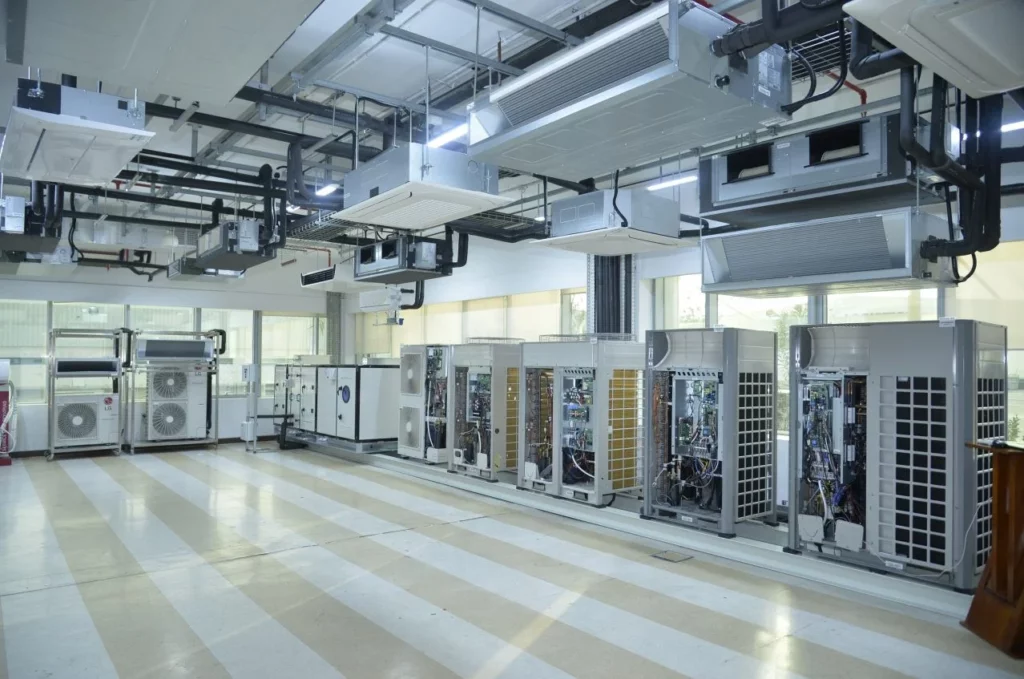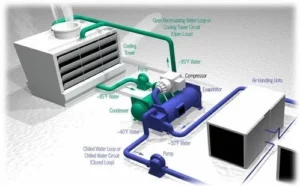
To maximize the efficiency of your heating and cooling systems, you must use the latest HVAC technologies. The HVAC Solution is an intelligent database that allows you to input and maintain data and pop-up forms for every component. Once connected, the solution automatically communicates with other components, guiding the designer in matching the right components to each other. The solution also saves your data for easy retrieval and sharing with other applications. The system produces full color schematics of airflow and hydronic systems as well as equipment schedules.
Multi-split systems
If you’re looking for a new commercial HVAC system for your property, you should consider multi-split systems. These HVAC systems feature two or more evaporators with just one compressor, making them perfect for large spaces and multiple floors. Multi-split systems also require less outdoor space than single-split systems, and can be operated with fewer parts. A multi-split system has the added benefit of reducing energy costs because it can detect and adjust temperature in multiple parts of the building.
These HVAC systems have divided into two parts. The outdoor unit, known as the condenser, contains a compressor to move air, while the indoor equipment has suspended from the ceiling or mounted on the wall. The indoor equipment is located inside the room, and is connected to the outdoor unit through thin copper tubing. This cooling and heating system uses refrigerant instead of a complex duct system.
Mini-split systems can more flexible and economical than conventional heating and cooling systems. Because they are ductless, they don’t suffer from energy losses associated with ductwork. Ductwork can account for up to 30% of the energy used by an air conditioning system, which has particularly significant in unconditioned spaces. Another advantage of mini-split systems has that they can target certain areas and create temperature-controlled zones. Mini-split systems may qualify for utility rebates and tax credits.

Variable air volume systems of HVAC
If your building has a large amount of space, you may want to consider variable air volume systems. These systems are characterized by a central air handling unit that cycles the ventilation and recirculated air in the facility. They deliver different amounts of air to different rooms depending on demand. The system also features a pressure independent terminal unit, which has independent of the pressure in the primary air ducts. In many cases, these types of systems have used in commercial buildings. They have also balancing devices, which allow each terminal to deliver the correct amount of air to the different areas.
A mixed air system uses two streams of air and strategically combines them to reduce the load in a single space. This type of system has effective in cooling but cannot control humidity. The variable air volume (VAV) system has developed to address the varying heating and cooling requirements of different zones in a building. Whether your facility has one large building or several small ones, the variable air volume system will give you optimal comfort and energy efficiency.
A VAV system can provide temperature control for individual rooms or the entire building. It can operate in a single zone or a multi-zone configuration. The dual duct version has separate ducts for hot and cold air and a plenum where the two types of air are mixed. The ratio of hot air to cold air has determined by the desired temperature. The most costly VAV system configuration has the dual duct VAV system.
Heat recovery systems by HVAC
In buildings, heat recovery systems are an important part of the energy efficiency strategy. In the UK, ten megawatts of recovered heat could save EUR350,000 per year in emission costs. The UK Climate Change Act of 2008 targets a 34% reduction in greenhouse gas emissions by 2020 and an 80% reduction by 2050, underlining the importance of such systems. Heat recovery has becoming increasingly commonplace in buildings, but the benefits do not stop there.
Installing heat recovery systems has an effective solution for any building, whether it is a residential home or an office building. The technology is versatile and can set up to run only when needed. Using CO2 and occupancy sensors, and time clocks to control the energy use. Heat recovery systems can help keep a building clean and fresh while reducing energy costs. This has especially important in buildings that use large amounts of electricity.
Heat recovery systems work by capturing the heat from stale air and recirculating it in the same location. This allows the heat from the stale air to transferred to the new supply air that enters through pipework into each room. This process also extends the life of heating equipment. The resulting in fewer repair bills and a reduced carbon footprint. With heat recovery, a property can maintain a tight airtight environment while saving significant amounts of energy.
